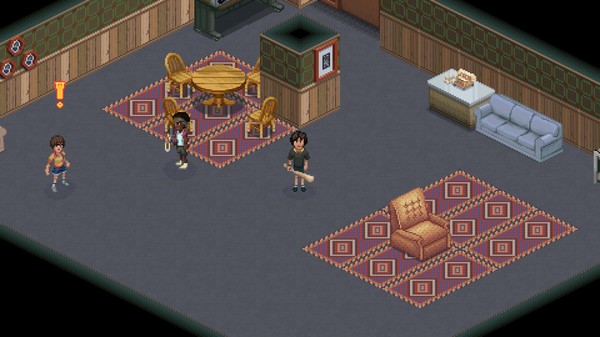I'm a child of the 80s and love 80s stuff, but I've never watched Stranger Things. I'm curious about it, though.
Stranger Things 3: The Game Review
|
|
See PixlBit's Review Policies

On 08/01/2019 at 01:32 PM by Nick DiMola Dungeon-crawling through Hawkins. |

A worthy purchase for fans of the show on discount.
Like so many other children of the ‘80s, I love Stranger Things. Booting it up is like taking a time machine back to my childhood. The pervasive synth music, the wardrobes and the cultural references instantly transport me, making it easier to get sucked into the day-to-day of Hawkins and the ever-creepy world of the Upside-Down. And just like a true ‘80s property, there’s also a tie-in video game to go along with the latest season of the show. Thankfully this tie-in isn’t quite as low budget as as the Atari 2600 and NES tie-ins of yesteryear, but the dungeon crawling brawler pales in comparison to the electrifying viewing experience offered by the show, especially this latest season.
Unlike so many other tie-in games, Stranger Things 3: The Game doesn’t take many liberties with its story. Beat for beat, the game aligns to the events of the show’s third season. It even goes so far as to be split into eight chapters, each of which roughly align with the episodes of this latest season. Of course, the major story points and dialog are distilled to convey the same points with much less exposition. It works as a fun recap to the actual season, but I wouldn’t recommend anyone play the game before watching the show.
The game is structured into a variety of missions, which are typically as simple as running from location to location in Hawkins collecting items for the characters who request them. Things like houses and buildings in Hawkins act as dungeons, forcing you to explore room by room, breaking items in the environment and destroying enemies who stand in your way. Eventually you’ll get deep enough into the structure to find what you were looking for and it’s a short trek back to return the item and receive your cash reward.
Using cash earned from successful missions, along with the money you’ll pick up along the way, you can buy health and energy supplies, as well as crafting materials to build better gear. The gear offers latent effects, increasing armor or damage depending on the character you’re using. Unfortunately, this is the only means by which you can improve your characters’ defense and attack. Grinding dungeon after dungeon won’t net experience points or any tangible bonus. Even finding or buying all of the materials to produce upgrades seems to be a challenge, leaving you with a roster of characters that don’t grow or change throughout the game.
As a psuedo-dungeon crawler, this seems to break some of the core gameplay loops that typically make that style of game appealing. I can confidently say that by the end of the 8-10 hours I spent completing all of the game’s main and side missions, I didn’t want to spend another minute playing it.
The only thing that breaks up some of the monotony are the varied abilities of the cast of characters and the interspersed puzzles throughout each of the game’s missions, giving you some repreive from button mashing to kill thugs. It’s fun to get play time with the full cast if you’re a diehard fan of the show. And some of the characters carry some special abilities that help gain access to locked off areas of Hawkins or are essential to solving a dungeon puzzle.
The cast is unlocked incrementally, which means that these gated areas are only gradually made accessible. Eventually you’ll have dungeons that will require both hacking and the ability to crawl through vents to solve a puzzle. Putting together navigation and a combination of hitting switches in a certain order based on clues found on computers scattered throughout the environment or with notes left on bulletin boards is the height of puzzle difficulty, which is fine for the style of game.
The characters also each have their own attacks and special abilities, which will deal different types of damage (ie physical vs chemical) and harm enemies in different ways. This encourages swapping between the characters to choose the right person for the job or to leverage the right special power to survive a given onslaught of enemies.
While you can invite a friend to jump in at any time with couch co-op, its implementation leaves a bit to be desired, especially for entering and leaving via loading zones. If one player hits such a spot, you’re both abruptly moved, no matter where your partner was, without notice.
If you opt to go it alone, the computer will control the second character for you. You can easily swap between both on-screen characters and you can also issue simple commands to make your partner follow or stay, making it pretty painless to leverage both characters to solve the cooperative puzzles.
Stranger Things 3: The Game largely rests on the mainstream appeal of the show and I can’t totally blame it for that. Even though most of the game is repetitive and shallow, there’s still something about it that draws you in. Maybe it’s playing as your favorite characters from the show or reliving the events of the third season, but I had enough drive to push through the frequent monotony to conquer all the missions thrown at me.
If it’s offered on a discount, this is a good grab for a fan of the show. Or, you can take the same eight hours you’d spend playing the game and just watch Season 3 again, endlessly hypothesizing about the implications of the conclusion. Either way.














Comments